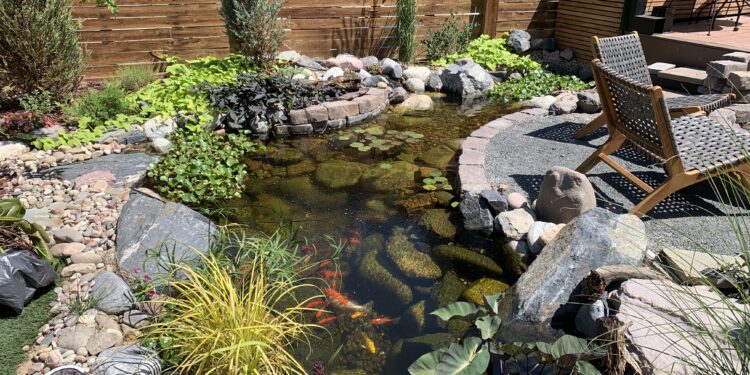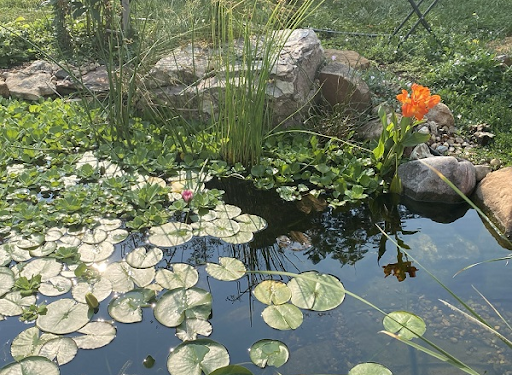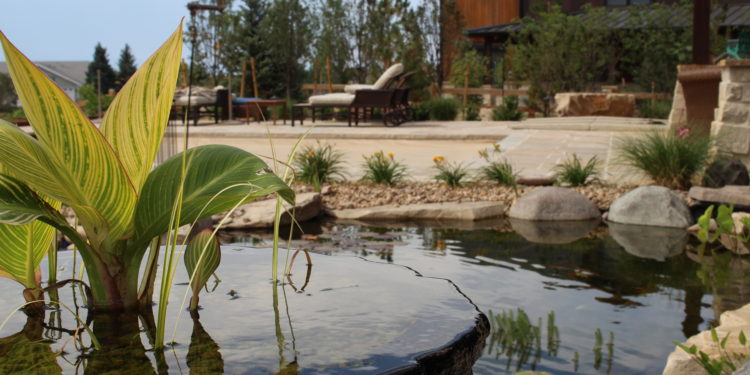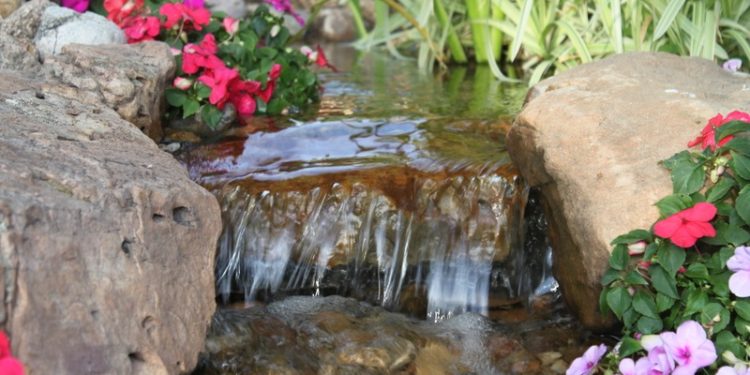Have you noticed the water level going down in your feature recently? Remember if you have a long stream, a high waterfall, or a bubbling rock, it could be the wind!
Splashing water can be blown out of the system in these high winds. Give it a few days for the wind to die down, and then see if you are still losing water. If you are, here is a handy guide on how to diagnose a leak.
Diagnosing your water feature—does it have a leak?
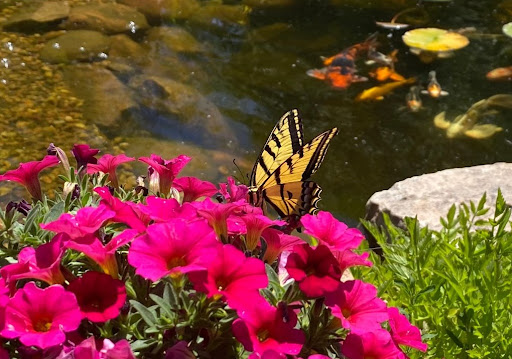
- Turn off the waterfall for the day or 24 hours (Healthy fish will be okay for this short period of time).
- Fill the pond to its normal, full level.
- Measure the level of the water in the pond. Measuring is very important! And make sure to measure it from a point that is easy to reach.
- Check the water level roughly 24 hours later. Re-measure so you know exactly how many inches of water has been lost overnight.
If the water level didn’t go down at all, the pond is holding water. Now, test the waterfall/stream. Read “Leak Test on The Waterfall Or Stream” below.
If the water did go down, the pond is losing water. Leave the pump off and let it continue to recede until it stops. If you have fish, make sure there is an aerator running. Don’t leave the pump off for more than a few days as the water may start to green up.
Leak test on the waterfall or stream
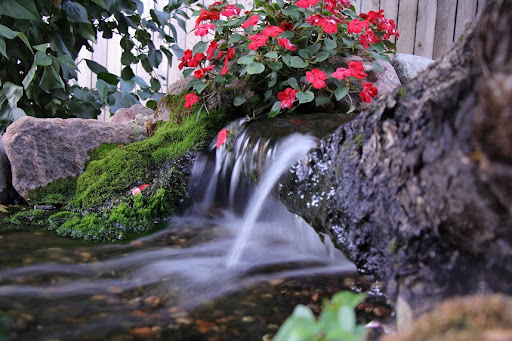
Do this test if you have first ruled out that the pond losing water.
- Leave the pump on.
- Measure the level of the water in the pond.
- Measure it again in 24 hours.
- If the water level in the pond has gone down 1/2″ or more, there is a leak in the waterfall or stream.
What do once water loss has been established
Over 90% of all leaks are from a low liner or folds in the liner allowing water to escape.
Exposing all the liner along the edge of the stream (or pond if the pond was losing water) is a good first step. Pull back the rocks and pull the liner up so that it is obvious water is not getting out.
Do the same leak test again to confirm it is no longer losing water. Once that is confirmed, it can be re-edged.
Re-edging
Re-edging can be difficult. Hiding the liner without causing folds that allow water loss, and making it look good can take some talent!
What if the rocks have concrete between them or there is concrete over the liner?
The freeze and thaw cycle here in Colorado almost ensures that concrete or mortar will eventually crack. If your system is experiencing water loss and there is mortar between the rocks or even concrete over the liner within the pond, it may have to be completely removed to locate the leak.
How do I know it’s not just evaporation?
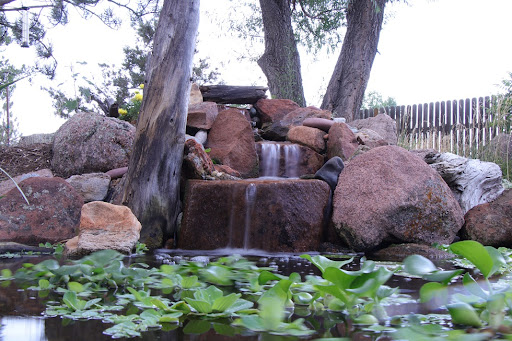
Evaporation happens all year, and during the hot summer, it may take a little more water out of your system than normal. Are you wondering what is normal?
In Colorado 1 to 3 inches of evaporation within a week is normal. It doesn’t matter how large or small the pond is, 1 to 3 inches of water loss in a week is evaporation.
Leaks can be difficult to diagnose and fix. If you need help contact us and we will send an expert out!
How else can Colorado Pond Pros help you?
We love our jobs and are excited to help you with your backyard pond installation, pond service, and repair! And as the pond experts, we have plenty of advice and info on landscaping as well. Contact us today for help tending to your pond or installing a new one!
Whether we’re talking about outdoor gold fish ponds, pondless waterfalls, cleanouts, renovations, leaks, or aquatic plants, we’ve got oodles of experience and enthusiasm to share! Just take a look at our blogs Topping Off the Pond: What to Keep In Mind, How Does Colorado Pond Pros Handle Bottom Drains? and High Winds and Your Backyard Water Feature.
[/et_pb_text][/et_pb_column]
[/et_pb_row]
[/et_pb_section]

